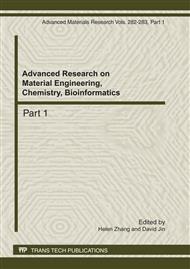p.440
p.444
p.449
p.453
p.457
p.461
p.466
p.470
p.474
Study In Situ on Rat Intestinal Absorption Mechanism and Influential Factors of Ginsenosides Rb1 and Rg1 in Bazhen Decoction
Abstract:
To investigate the absorption of ginsenosides Rg1 and Rb1 in Bazhen Decoction at different intestine segments of rats and the influence of the drug solution concentration, pH, P-gp inhibitor on ones. The intestine cannulation was performed for in situ recirculation. The concentration of ginsenosides Rg1 and Rb1, and phenol red in the flux were measured by the reversed phase HPLC and ultraviolet spectrophotometry, respectively. The absorption of ginsenosides Rg1 and Rb1 in Bazhen Decoction in intestine of rat show first-order kinetics with the absorption mechanism of passive diffusion. Ginsenoside Rg1 has specific absorption locus of duodenum and ginsenoside Rb1 has specific absorption locus of jejunum. Meanwhile, ginsenoside Rb1 is the P-gp substrate, and could increase its fraction of bioavailability by corporation with P-gp inhibitor.
Info:
Periodical:
Pages:
457-460
Citation:
Online since:
July 2011
Authors:
Price:
Сopyright:
© 2011 Trans Tech Publications Ltd. All Rights Reserved
Share:
Citation:


